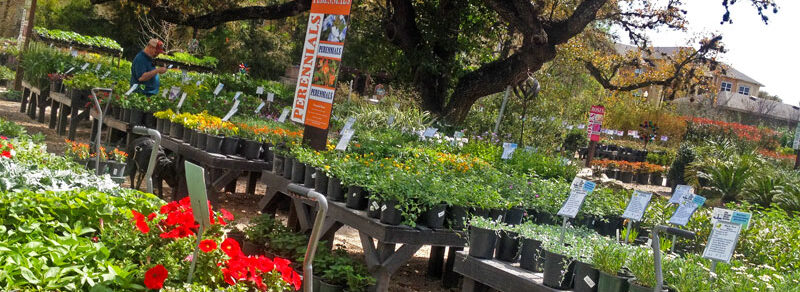Japanese Maple
November Plant of the Month
It's the time of year for deciduous trees to put on a fall show of color before dropping their leaves for winter. If you're looking to add some spectacular fall reds, yellows and burgundy to your landscape, Japanese Maple may be an option for you!
Why Japanese Maples?
Japanese Maples range in size from small and shrubby to larger tree forms, but still small enough to fit almost any garden. There are even weeping varieties! They are well known and prized for their beautiful foliage. Some have the classic, unmistakeable maple leaf shape while other have a more lacey, fern-like appearance. Some Japanese Maples have colorful bark in addition to their foliage like the Coral Bark (Sango Kaku) cultivar. Coral Bark has bright red new stems that contrast nicely with its bright green foliage.
Japanese Maples are probably best known for their fall color. Before dropping leaves for winter, you can expect deep burgundy, orange, gold, bright red or even purplish hues. There is a catch, however. Planting Japanese Maples in South Texas take a little bit of planning.
Made for the Shade
Here in San Antonio, Japanese Maples definitely NEED shade. Plant your maple as an understory tree on the east side of your home. Just a few hours of morning sun is perfect. This will give your tree enough light for that bright fall color without getting too hot. Mid-day sun is a big no-no. Hot afternoon sun? You're askin' for it.
Too much sun can give your tree some super crispy leaves. While your maple might be ok in spring or fall, summer is just too dang hot here. A common problem that folks have with Japanese Maples is planting them in a space with too much sun, which in turn causes a case of crunchy foliage. Thinking the tree is not getting enough water, they end up drowning it!
Wet Feet Won't Work
You see, here's the other trick to growing beautiful Japanese Maples-yes, they need moisture, but well-drained soil. If you're planting in the ground and you've got lots of clay, amend it with a little sand, compost or aged bark. You can avoid this altogether by planting your maple in a container or raised bed. They are slow growers and do great in containers! The other advantage to planting is containers is that you can move them around.
Once you get your tree in the right spot, Japanese Maples are pretty low maintenance. They don't require heavy fertilizing or special care against insects. If you want to feed your maple, use an organic or slow release fertilizer in the spring or fall.
Here are the varieties available this year at The Garden Center. Come by and take a look, they're starting to get their fall color!
Bloodgood- Brilliant red fall color, upright growth habit with red/black bark. Grows up to 15-20 ft.
Everred- Deep red fall color with a weeping growth habit to 10 ft.
Green Lace- Lacey foliage turns gold and crimson in fall. Weeping habit to 8 or 10 ft.
Ryusen Weeping- Palmate leaves turn yellow, red-orange in fall. Faster grower with a weeping habit up to 20 ft.
Coral Bark- Young branches are bright red especially in winter. Vibrant green foliage turns gold in fall. Upright grower to 25 ft.
Tamukeyama- Deeply lobed, purplish foliage turns bright red in fall. Deep red bark. Cascading habit to 10 ft. tall


